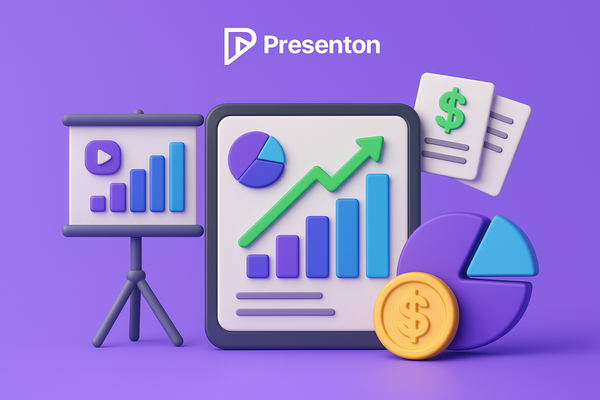Mastering Data Presentation and Analysis: Tips for 2025

Data presentation is a vital skill for transforming raw information into insights that inform, persuade, and inspire action. Whether you’re addressing business leaders, researchers, or the general public, the way you present data can make or break its impact. Effective data presentation combines storytelling, audience awareness, and clear design to ensure complex information is both accessible and engaging. Drawing from authoritative sources like Harvard Business Review, Tableau, and the United Nations Economic Commission for Europe (UNECE), this article explores the best practices for presenting data across various formats, from text and tables to charts, maps, and emerging techniques.
Crafting a Clear Narrative
The foundation of any great data presentation is a clear, compelling story. Research suggests that every presentation should center on a single message—whether it’s a sales trend, a scientific finding, or a policy impact—to keep the audience focused. Start by asking: What’s the key takeaway? For example, a business report might highlight “Net profits rose to 19 billion euros in Q2 2008,” leading with the most critical insight. Knowing your audience is equally essential. Executives may appreciate technical depth, while the public needs simpler, jargon-free explanations. Practice your delivery to refine this narrative, ensuring it’s concise, accurate, and rehearsed for clarity.
Mastering Textual Presentation
When presenting data in text, adopt a journalistic approach. The UNECE’s Making Data Meaningful Part 2 guide recommends an inverted pyramid structure: lead with the most important point, like “Inventory levels eased slightly in July 2008,” followed by supporting details. Use subheadings to break up content and short sentences—one idea each—for readability. Avoid jargon unless your audience expects it, and ensure every paragraph starts with a key message. This method ensures quick comprehension, especially in reports targeting diverse readers.
Designing Effective Tables
Tables excel at presenting precise figures, such as “Manufacturing sales in Canada increased from 52,685 million to 54,105 million between June and July 2008, a 2.7% rise.” To make tables standalone, include titles, headers, footnotes, and sources. Align numbers on the decimal point, use thousand separators (preferably spaces), and round for simplicity. Mark empty cells as “NA” with a clear definition. A well-designed table, as the UNECE advises, communicates data without needing external context, making it a powerful tool for comparisons.
Choosing the Right Visuals
Visuals like charts and graphs bring data to life, ideal for showing trends, comparisons, or correlations. Bar charts—preferably horizontal and ordered by size—work well for categories, such as “Germany led with 40% female ambassadors in 2006.” Line charts suit time series, like unemployment rates dropping from 20% in Spain to 12% in France over years. Keep visuals simple: avoid 3D effects, limit pie chart categories to six, and use data labels over legends. Tableau’s checklist emphasizes selecting familiar, unbiased visualizations that align with your story, ensuring clarity over flashiness.
Mapping Spatial Data
For geographic insights, maps are unmatched. The UK’s cancer atlas, for instance, used choropleth maps to show cancer incidence from 1991–1999. Choose map types wisely: choropleth for ratios, dot maps for density, or proportional symbols for totals. Ensure maps are standalone with titles, legends, and scales, and prioritize accessibility—avoid red-green color schemes for color-blind viewers and use shades for continuous data. A clean, focused map can reveal spatial patterns that text or charts can’t match.
Embracing Emerging Techniques
Dynamic visualizations and Web 2.0 tools are reshaping data presentation. Animated population pyramids from Statistics Canada engage viewers interactively, while platforms like Many Eyes and Swivel foster community exploration—UNECE datasets on Swivel, for example, garnered over 5,000 views. Sparklines (tiny trend lines, like euro exchange rate shifts) and tag clouds (highlighting keyword frequency) offer fresh ways to present data online. These techniques captivate digital audiences, blending interactivity with insight.
Ensuring Accessibility
Great data presentation includes everyone. Provide text in multiple formats—Braille, audio, or screen-reader-friendly HTML tables with repeated headers. Charts need alt text or longdesc tags, and maps should offer search tools. The UNECE and W3C guidelines stress avoiding accessibility barriers, like unreadable color contrasts, ensuring all audience members can engage with your data fully.
Building Trust with Sources
Credibility hinges on citing data sources. A pyramid approach to metadata—top-level summaries for casual users, detailed stats for experts—keeps it free, multilingual, and linked via stable URLs. For example, citing “Livestock inventory in Canada fell from 15,885k to 15,195k cattle between 2007–2008” with a source builds trust. As Prezent.ai notes, transparency in sourcing turns data into a reliable foundation for decision-making.
Conclusion
Effective data presentation is an art and science, blending a clear story, audience-tailored design, and technical precision. From concise text and standalone tables to simple charts, accessible maps, and innovative tools, these practices ensure your data speaks powerfully. In 2025, as data grows more central to decision-making, mastering these techniques—supported by rehearsal and source integrity—will set you apart, turning numbers into narratives that resonate.




